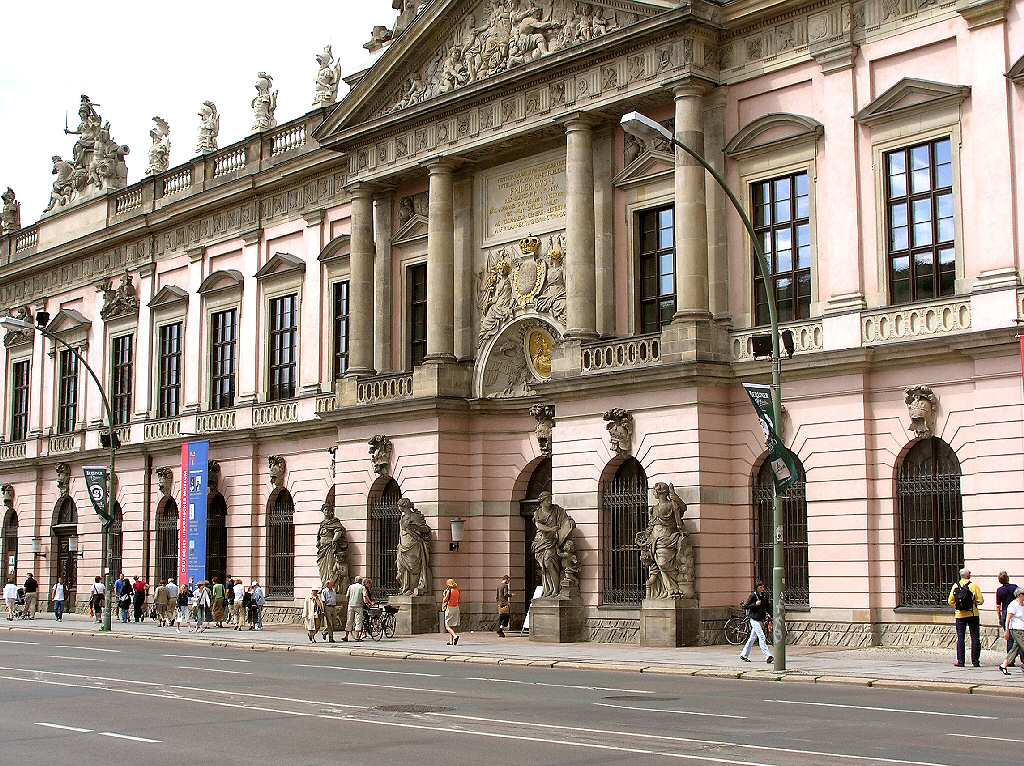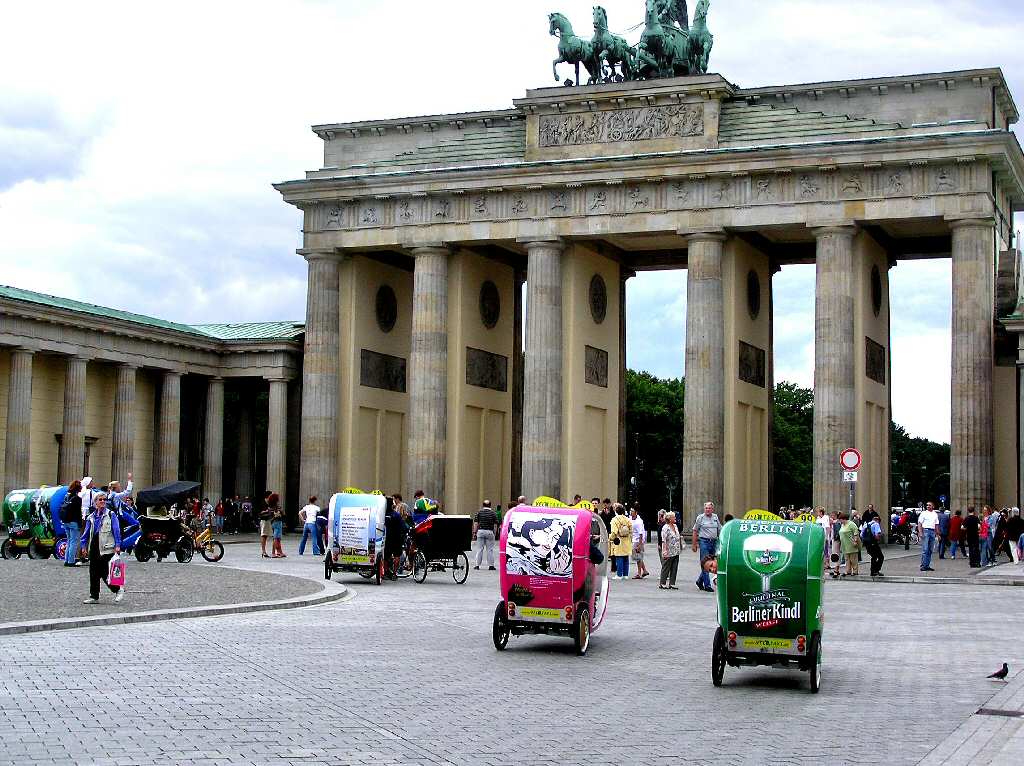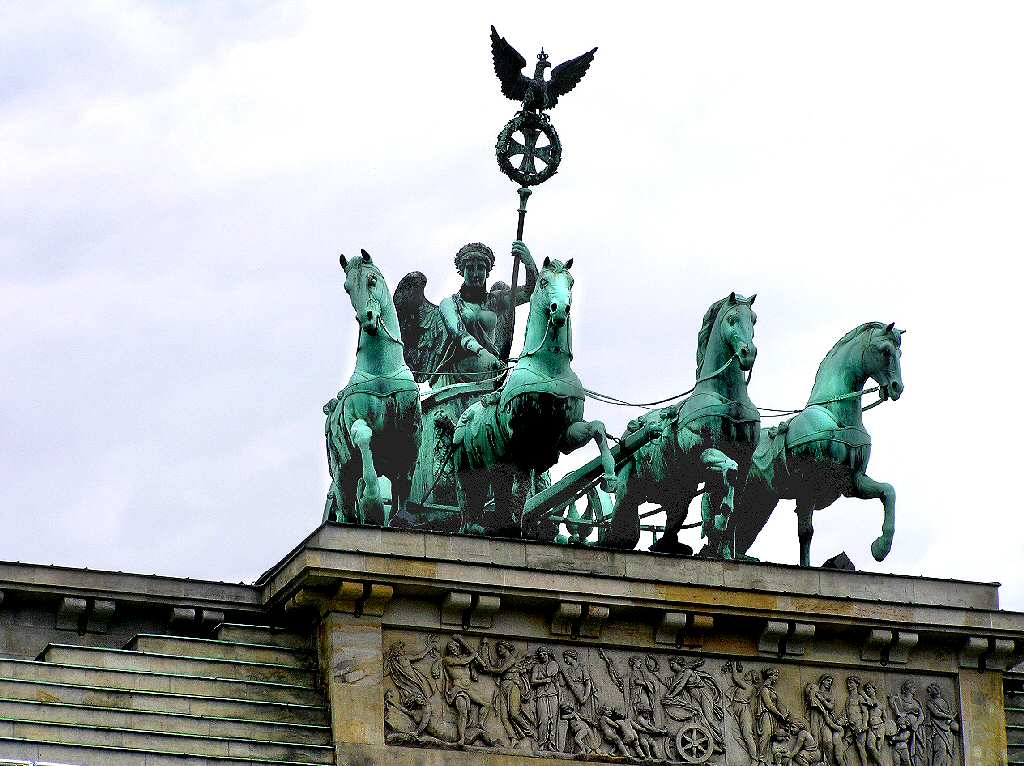Unter den Linden - Berlin's elegant boulevard
This Berlin's most elegant boulevard flanked by linden trees starts at the Alexanderplaz Railway Station and stretches over the Schloss Bridge to the Schloss Platz and leads up to Brandenburg Gate.

It is lined with fine buildings, shops and restaurants. In the 1930s the Nazi political party replaced linden trees with flagposts. After the war the boulevard was replanted again.
Because most of the road was in the East German section it was saved from being turned into a western style shopping street containing McDonalds, Starbucks, Kaufhof and Woolworth department. The street had been subject to heavy bombing but slowly the German Democratic Republic started to reconstruct most of the historic buildings in an effort to make this grand boulevard shine in all its monumental Prussian glory.

Berlin Brandenburg gate tor
The Brandenburger Tor or gate, is probably the most symbolic landmark in Berlin. In 1961 the Berlin Wall was constructed right next to the Brandenburger Tor.
The gate was right on the border between East and West Berlin, but didn't form part of the wall. The square called Pariser Platz, on the East-Berlin side of the gate became completely deserted. The gate symbolized Germany's division. It was inaccessible to the public for 28 years.
There is no sign of the wall today. From the eastern side the Brandenburger Tor frames the large Tiergarten green parkland behind it. The Brandenburger gate was the location on the night of October 3rd, 1989, when the once divided German nation was joined together again when the Berlin wall came down.

It was modeled on the entrance to the Acropolis in Athens. It was designed by Carl Gotthard as a city gate and triumphal arch and built between 1788 and 1791. In 1871 the celebration of the first real unification of Germany, called the Second Reich, with the first being the Holy Roman Empire, was held here.
Nazi torch lit celebration marches of 1933 were held at the gate. The four horse Quadriga chariot, crowning the Brandenburger gate was built in 1793 by Johann Gottfried Schadow. It was designed as a symbol of peace. The figure on the chariot is Eirene, the god of peace but in 1806 Napoleon during his occupation of Berlin ordered the statue to be taken to Paris.
It was triumphantly taken back to Berlin after the Battle of Waterloo. It was turned into a symbol of victory. The original was destroyed in World War II. The only bit left is one horse-head, now to be seen in the Markisches Museum.
In 1958 a new quadriga was finished and placed on top of the historic gate. The Brandenburger gate was part of a wall surrounding the city. It was the main entrance to the city. It is the only gate that still remains of this former city wall. It is 26m high (with quadriga), 65.5m wide and 11m deep. The middle gate, that is 5.6m wide, was reserved for the royal family. The other four gates are 3.8m wide and were allocated for the public.
Today, the gates are part of a pedestrian zone. There is a very informative Tourist Office on the southern part of the Gates. Some of the locals dress up in costume for tourist to take photographs. BEWARE they will approach you and demand money for each photograph. The nearest railway S-Bahn station is Unter den Linden and the best buss is the Bus 100.
Travel books

